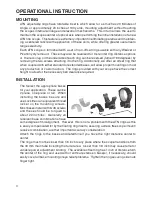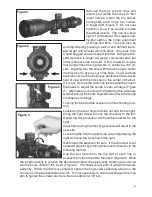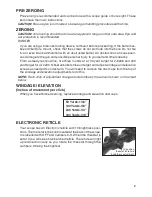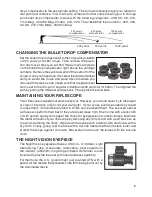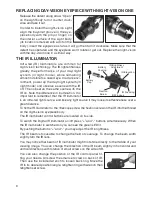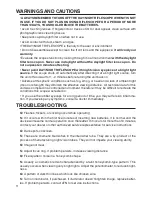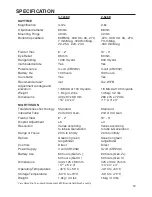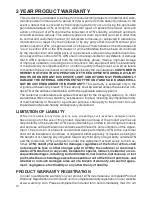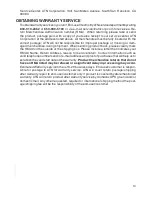
5
SIghT IN YouR RIFlE
Chances are your rifle will not shoot to your bore sighted zero or to the zero you desire.
This is primarily due to the rifles recoil impulse prior to the bullets departing the barrel.
Recoil for RH twist barrels tends to carry the shot up and to the left. If you are more than 1
inch in any direction from the center of the bull or from your desired zero, adjust the scope
using the rings insert mechanism or the rings side nuts as described above. It is always
best to loosen the top halves of the ring just enough to allow free rotation or pivoting of
the inserts so that stress is not introduced by any changes. Once you have zeroed your,
windage retighten the side nuts and proceed to fine-tune the elevation. Both rings have
10 MOA adjustment via the insert. You will note that each insert has a thick and a thin
side that allow a centric orientation of the scopes body in the rings. The scope’s elevation
may be adjusted as follows:
Placement of the thick side at 6 O’clock in the rear ring will result in raising the crosshair
10 inches at 100 yards. Conversely placing the thick side at 12 O’clock will lower it 10
inches. Again similar adjustments of the front ring’s insert will have an opposite effect;
the thick side at 6 O’clock will lower the impact 10 inches at 100 yards. Therefore, place-
ment of the thick side of the rear ring at 6 O’clock and the front’s at 12 O’clock will raise
the impact a maximum of 20 inches at 100 yards. Any combination from 0 to 20 MOA is
possible depending on the orientation of the inserts in tandem.
NOTE:
Any orientation of the inserts such that the thick sides of the inserts are not verti-
cal, i.e., not at 12 or 6 O’clock, will result in a windage change in addition to elevation. In
this case, once elevation has been achieved a final windage adjustment must be carried
out using the side nuts as described above.
Once your basic zero is set you can now use the scopes internal adjustments to fine tune
impact to any shooting condition with the confidence that your optics are free of accuracy
robbing parallax and stress.
FocuSINg
While holding the scope about four inches from your eye, quickly glance through the eye-
piece at a featureless, flatly lit bright area such as a wall or the sky.
CAUTION:
Viewing the sun can cause serious eye injury,
never look at the sun with this product or even the naked
eye.
If the reticle is not visible sharply turn the eyepiece (either
direction) a few turns. Quickly glance through the scope
again. If the focus has improved, but is still not perfect, con-
tinue focusing. If the focus condition became worse, turn it
the opposite way.
±5 Diopter




